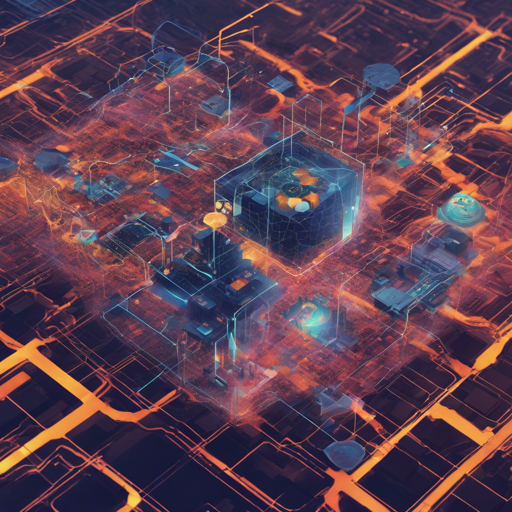Are you looking to enhance low-resolution images into stunning high-resolution versions? Meet Flux.1-dev, a powerful upscaling tool developed by the Jasper research team, powered by the sophisticated Flux.1-dev ControlNet. This guide will walk you through the process of using this remarkable tool within the diffusers library, providing a user-friendly approach to image enhancement.
Getting Started: Installation and Setup
Before diving into the code, ensure you have the necessary libraries installed. You will need Python and the diffusers library. If you haven’t installed it yet, you can do so using pip:
pip install diffusersNow that you’ve got everything set up, let’s jump into how to implement the Flux.1-dev ControlNet model.
How to Use the Flux.1-dev ControlNet
Here’s a step-by-step breakdown of the code needed to utilize the upscale capabilities of Flux.1-dev:
import torch
from diffusers.utils import load_image
from diffusers import FluxControlNetModel
from diffusers.pipelines import FluxControlNetPipeline
# Load pipeline
controlnet = FluxControlNetModel.from_pretrained(
"jasperai/Flux.1-dev-Controlnet-Upscaler",
torch_dtype=torch.bfloat16
)
pipe = FluxControlNetPipeline.from_pretrained(
"black-forest-labs/FLUX.1-dev",
controlnet=controlnet,
torch_dtype=torch.bfloat16
)
pipe.to("cuda")
# Load a control image
control_image = load_image("https://huggingface.co/jasperai/Flux.1-dev-Controlnet-Upscaler/resolve/main/examples/input.jpg")
w, h = control_image.size
# Upscale x4
control_image = control_image.resize((w * 4, h * 4))
image = pipe(
prompt="",
control_image=control_image,
controlnet_conditioning_scale=0.6,
num_inference_steps=28,
guidance_scale=3.5,
height=control_image.size[1],
width=control_image.size[0]
).images[0]
Understanding the Code**: An Analogy
Imagine you’re an artist working on a canvas, and you want to fill a small canvas with larger, more vibrant strokes. Here’s how the coding process relates to this analogy:
- **Importing Libraries**: First, you gather your tools (importing torch and libraries) to prepare for the artwork.
- **Loading the Pipeline**: You set up your easel and canvas (loading the control model and pipeline) to start your masterpiece.
- **Control Image Preparation**: You choose a reference picture (loading the control image) that will guide your colors and shapes as you upscale.
- **Upscaling**: Finally, you apply your colorful strokes (upscaling using the model) to make the small canvas burst with life, turning it into a larger, more detailed piece.
Troubleshooting Tips
If you run into any issues while using the Flux.1-dev ControlNet, consider the following troubleshooting ideas:
- **Ensure all libraries are up-to-date**: Make sure you have the latest version of diffusers installed.
- **Check your image URLs**: Confirm that the image paths you provide in the code are correct and accessible.
- **GPU Compatibility**: Ensure that you have CUDA installed and configured properly if you’re utilizing GPU acceleration.
- **Memory Issues**: If your application crashes due to memory overload, try resizing control images to a smaller resolution before processing.
For more insights, updates, or to collaborate on AI development projects, stay connected with fxis.ai.
Conclusion
Using the Flux.1-dev ControlNet for image upscaling not only enhances your images but also opens up a world of creative possibilities. As you experiment with this model, you’ll discover the nuances of image enhancement and the art of control within the realm of AI.
At fxis.ai, we believe that such advancements are crucial for the future of AI, as they enable more comprehensive and effective solutions. Our team is continually exploring new methodologies to push the envelope in artificial intelligence, ensuring that our clients benefit from the latest technological innovations.

